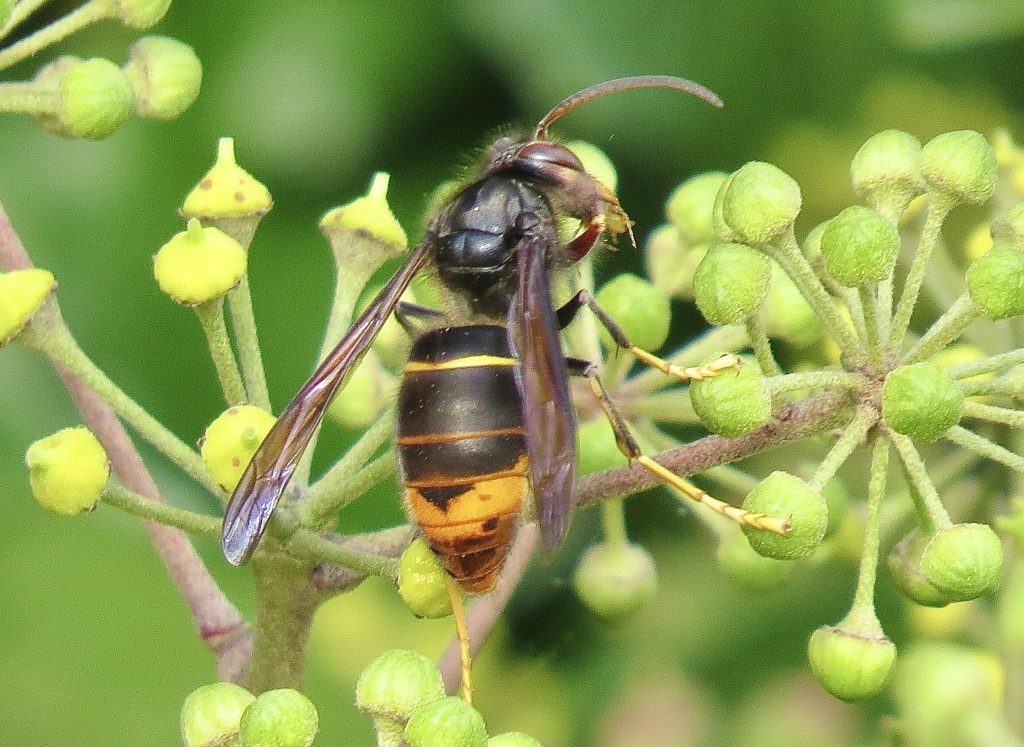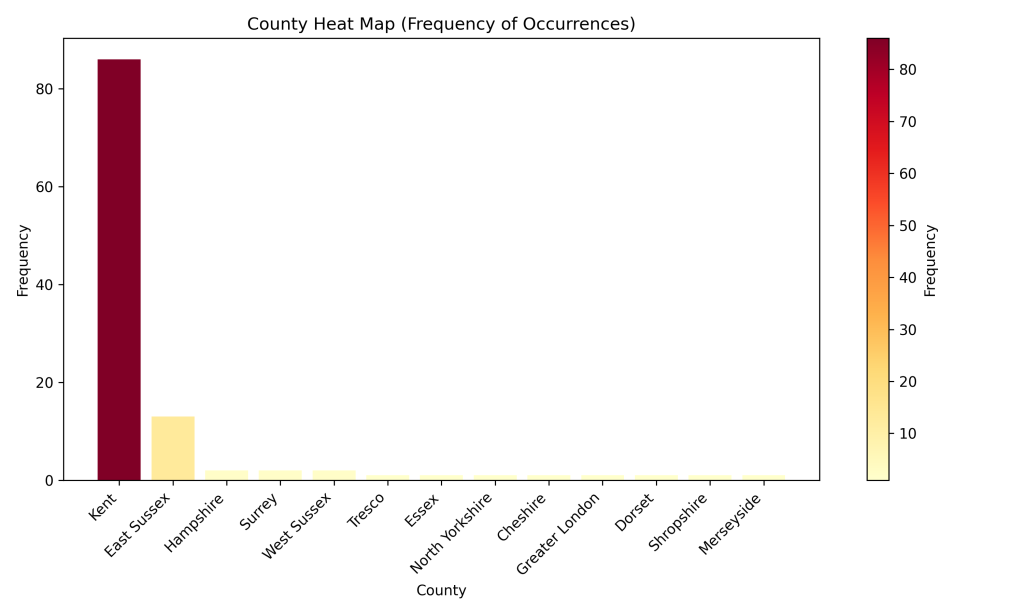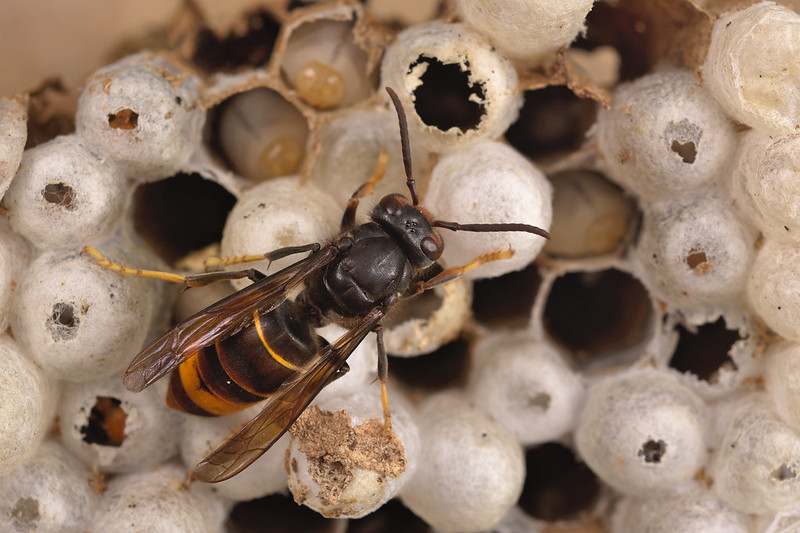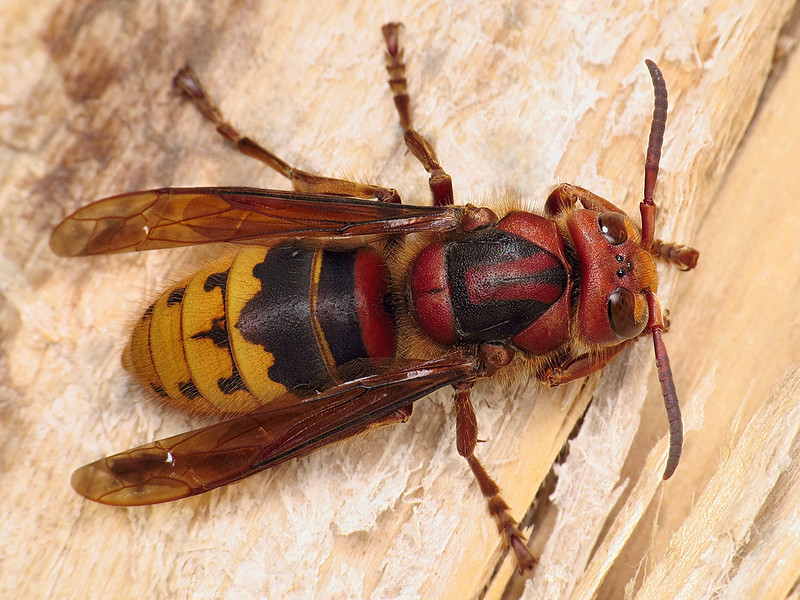The Sefton Coast received its first-ever confirmed sighting of the non-native, invasive Asian or Yellow-legged Hornet (Vespa velutina) on 1st November 2025, after a single adult was photographed and reported from Crosby by Pete Kinsella. The discovery follows the destruction of a nest in Runcorn in September, the first confirmed nest in North West England. According to Defra, all other nests destroyed in 2025 have been from the south coast (with the exception of a single nest in North Yorkshire), making these a worrying sign of northward expansion. Adult Hornets are likely to be active whilst the weather remains mild and all sightings should be reported (see below for details). Flowering Ivy bushes in sunny positions are good places to look at this time of year.

Where did the Asian Hornet come from?
The Asian Hornet is native to East Asia, particularly regions such as China and Cambodia. It was accidentally introduced into southwest France in 2004, near Bordeaux, probably via a shipment of goods containing a single fertilised queen. From there, it spread rapidly across France, then into Spain, Portugal, Belgium, and Italy. It was only a matter of time before it crossed the Channel and reached the UK.
Climate models show that much of western and northern Europe is highly suitable for this species, which is unfortunate given its invasive nature.
Arrival in the UK
The first UK detection occurred in Tetbury, Gloucestershire, in 2016, and low numbers of sightings were reported each year (fewer than 10 per year) until 2023. Numbers have since increased dramatically, with the National Bee Unit reporting hundreds of credible sightings and over 150 nests destroyed in 2025 alone. These sightings remain concentrated in South East England, probably as a result of concerted efforts to prevent their establishment, but isolated locations further North are increasing as the wasp demonstrates it’s impressive dispersal abilities that saw it spread so quickly on the continent.

Why is it a concern?
Asian Hornets have a strong association with the European Honeybee, attacking worker bees as they return to their hives. This can devastate the colonies. A single hornet can kill 50–90 honeybees per day, and a large nest can consume over 11 kg of insects in a season. Unlike in Asia, where honeybees have evolved defenses, European Honeybees are highly vulnerable.
But their impact goes beyond farmed honeybees as they also attack native wildlife. They are generalist predators, and recent DNA metabarcoding studies of gut contents reveal a highly diverse diet, feeding on a wide range of insects including butterflies, moths, and other Hymenoptera. It is difficult to predict the full impact of invasives on our native insects, with their new prey having not had an opportunity to evolve a specific defense.
Identification
Asian Hornets can be confused with their native cousin, the European Hornet (Vespa crabro), and some queens of social wasp species. Below is a summary of the main differences in appearance between hornet species but see the National Bee Unit website for further details.
| Feature | Asian Hornet (V. velutina | European Hornet (V. crabro |
|---|---|---|
| Size | Smaller (25–30 mm) | Larger (30–40 mm) |
| Abdomen | Mostly dark with one orange/yellow band | Mostly yellow with black / brown bands |
| Face | Orange (view insect head on) | Yellow (view insect head on) |
| Legs | Yellow tips | Brown |


What should you do if you spot one?
If you think you’ve seen an Asian hornet:
- Do NOT approach or disturb the nest – hornets can become aggressive when threatened.
- Take a clear photo if safe to do so – identification is crucial.
- Report immediately via:
- The Asian Hornet Watch app (iOS and Android).
- The UK Government reporting form.
- Do not attempt to destroy nests yourself – this is dangerous and should only be done by trained professionals.
Sources
- Defra UK Government: Asian Hornet Sightings Recorded Since 2016
- National Bee Unit: Asian Hornet Information
- Non-native Species Secretariat: Asian Hornet Identification and Reporting
- British Beekeepers Association: Asian Hornet Threat
- Dr Liam Crowley (video lecture on Tanyptera Project YouTube Channel): Social Wasps







